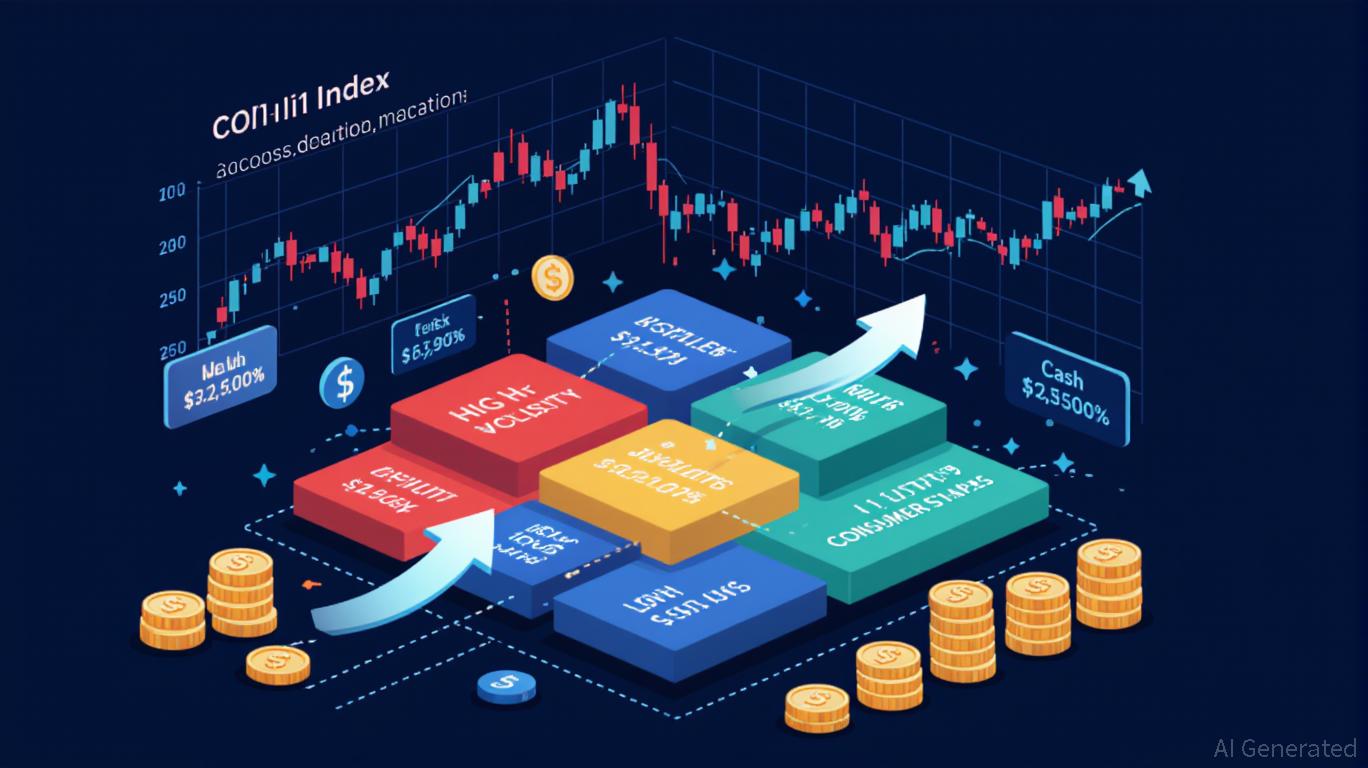Monero’s reputation for privacy faces challenges from modular competitors and evolving regulations
- Monero (XMR) nears $400 as privacy-focused crypto gains traction amid evolving market demands for modular solutions. - Emerging rivals like Solana's GhostwareOS and Zcash challenge Monero's dominance with interoperable privacy features. - Regulatory pressures, including South Korea's expanded AML rules, heighten scrutiny on privacy coins despite their anti-surveillance design. - Analysts highlight Monero's "extreme privacy" legacy but note growing adoption of integrated privacy tools in active blockchain
Monero's Upward Momentum and the Changing Privacy Crypto Landscape
Monero (XMR) has continued its recent upward trend, with bullish investors setting their sights on a possible new yearly high. As the privacy-centric cryptocurrency trades in the $380 to $390 range, its market capitalization stands at roughly $6.9 to $7.0 billion, based on Binance figures.

Experts in technical analysis highlight Monero’s enduring reputation as a leader in privacy, thanks to features like ring signatures and stealth addresses. However, the broader crypto sector is increasingly gravitating toward modular privacy tools that can be integrated into various blockchain platforms.
Innovation and Competition in Privacy Coins
The resurgence of interest in privacy coins is fueled by both technological progress and shifting regulatory frameworks. While Monero’s robust anonymity remains a key advantage, it now faces competition from emerging projects such as GhostwareOS on Solana, which introduces privacy layers compatible with DeFi and NFT applications.
Meanwhile, Zcash (ZEC) has established itself as a top contender in 2025, trading close to $500 and serving as a cornerstone for on-chain privacy. Ghost, another privacy-oriented project, is gaining momentum with its GhostPay service, which anonymizes transactions and redistributes fees to token holders, even though its market cap is comparatively modest.
Market Trends and Institutional Interest
The overall cryptocurrency market has shown signs of stabilization. Notably, XRP experienced a 7% jump following the introduction of regulated ETFs, signaling a rise in institutional participation. Despite these developments, Monero’s path is shaped by its distinct position within the privacy sector. Analysts point out that while Monero remains the “gold standard” for default privacy, its significance is now complemented by privacy solutions that are seamlessly woven into broader blockchain ecosystems. This evolution reflects a maturing market that values both privacy and interoperability.
Regulatory Developments and Their Impact
Regulatory scrutiny continues to intensify around privacy-focused assets. For example, South Korea has recently broadened its anti-money laundering (AML) regulations to include crypto transfers below $680, increasing oversight of privacy coins. These measures are designed to close gaps that could be exploited for illegal activities such as drug trafficking and tax evasion. Although Monero’s technology is inherently resistant to such controls, the evolving regulatory landscape may influence investor confidence and adoption strategies.
Outlook for Monero
Looking forward, Monero’s ability to sustain its price rally will hinge on how well it balances its core privacy features with the changing needs of the market. Technical signals, such as resistance points and trading volume, indicate the possibility of a breakout if institutional interest remains strong. Nevertheless, larger economic factors—including interest rate trends and geopolitical events—will also have a significant impact on Monero’s future performance.
Disclaimer: The content of this article solely reflects the author's opinion and does not represent the platform in any capacity. This article is not intended to serve as a reference for making investment decisions.
You may also like
Ethereum News Update: Ethereum Drives Institutional Transformation with Amundi Tokenizing Major Fund
- Amundi tokenizes a money market fund on Ethereum , signaling institutional adoption of blockchain-based asset management. - Ethereum's upgrades like PeerDAS and Bhutan's $970k ETH staking highlight growing institutional trust in its infrastructure. - CoinShares' $250M Bitcoin Miners ETF and global digital ID initiatives underscore tokenization's role in modernizing finance. - Ethereum's $3,100 price resistance and technical indicators suggest potential for long-term resilience amid scaling improvements.

Hyperliquid News Today: Hyperliquid Adopts Tidewater’s Strategy to Streamline Crypto Risk Management
- Hyperliquid introduces automated downsizing to stabilize HYPE, which dropped 52% from its peak. - Strategy mirrors Tidewater Renewables' capacity management, balancing short-term volatility with long-term stability. - Hyperliquid Strategies DAT plans $300M HYPE buybacks to inject liquidity and institutional-grade risk frameworks. - Market faces $1.89B+ liquidation risks if Bitcoin/Ethereum surge, prompting automated buffers to prevent cascading sell-offs. - Approach reflects growing DeFi adoption of algo
The Unexpected COAI Price Decline: Key Lessons for Investors from the November 2025 Market Turbulence
- COAI Index's 88% November 2025 collapse stemmed from C3.ai governance failures, regulatory ambiguity, and panic-driven herd behavior. - Market psychology amplified losses as investors overreacted to AI sector risks, ignoring fundamentals and triggering liquidity crises. - Diversification, cash reserves, and AI-driven tools helped mitigate risks, emphasizing long-term strategies over speculative hype. - The crisis exposed dangers of overreliance on AI/DeFi narratives, urging disciplined, diversified portf

CME Suspension: Global Market Vulnerabilities Revealed by Thermodynamic Constraints
- CME Group halted Globex trading on Nov 28, 2025 due to CyrusOne cooling system failure in Chicago, freezing 90% of global derivatives markets. - The outage caused erratic price swings in gold/silver and disrupted EBS forex platforms, exposing vulnerabilities in third-party data center reliance. - Despite post-holiday timing softening immediate impact, the incident highlighted systemic risks from thermodynamic limits in AI-era infrastructure. - CME faces pressure to build redundant systems as it expands c
